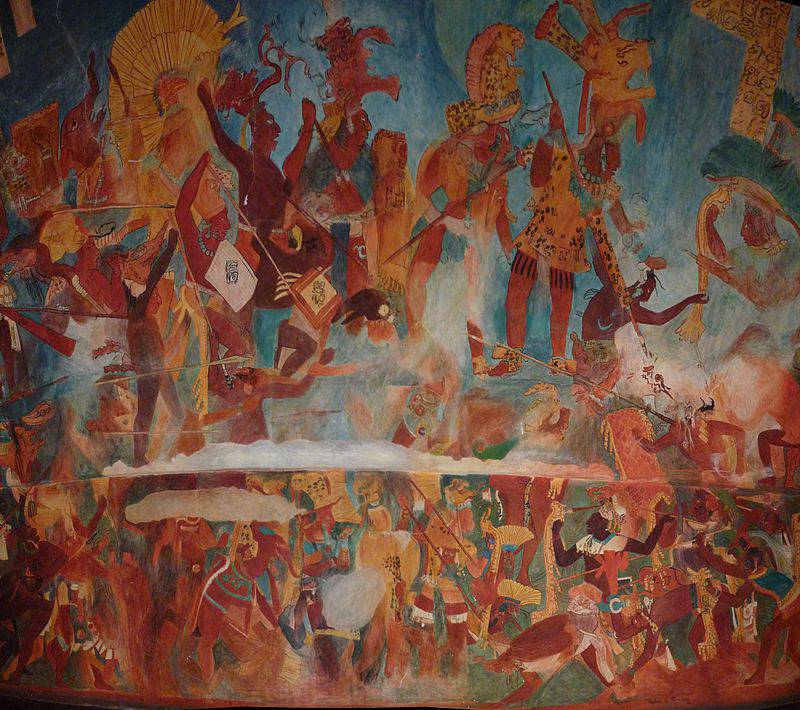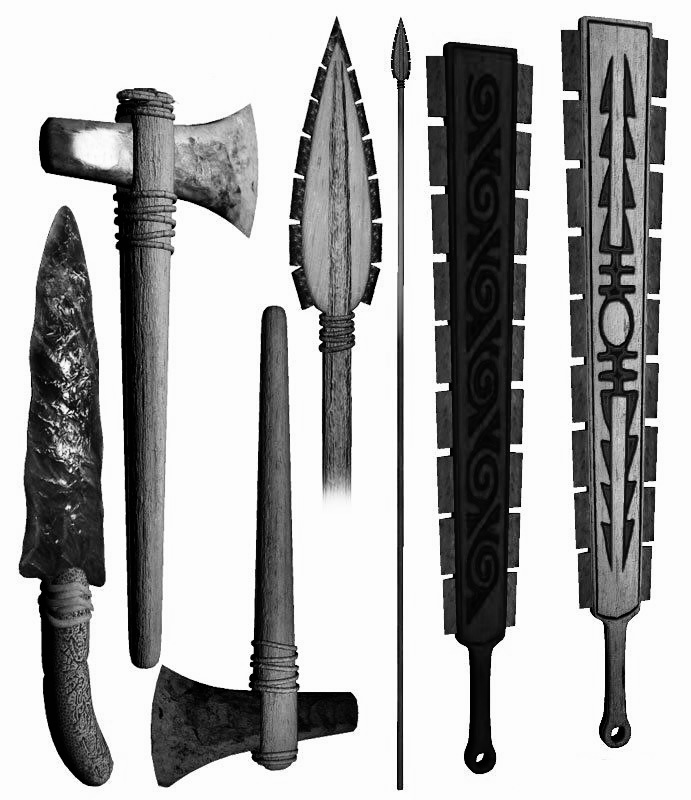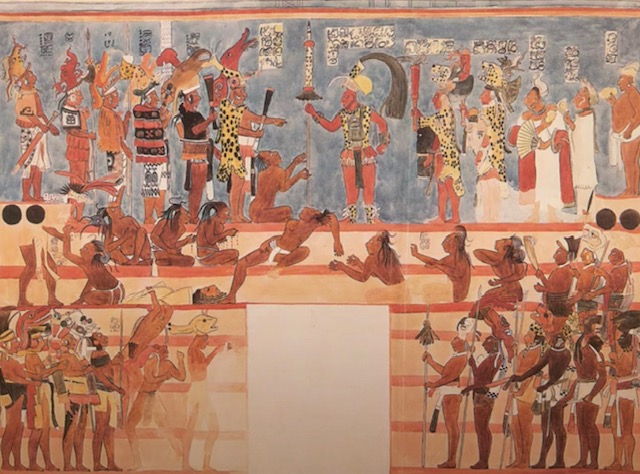The Militarized Maya: Warfare and Rituals in Ancient Mesoamerica
Initially, anthropologists viewed the Maya civilization as a peaceful society focused on agriculture, astronomy, and monumental architecture. However, further research revealed a different narrative. Archaeology, architecture, and Maya texts indicate that warfare was integral to Maya society, shaping politics, economics, and rituals. Warfare influenced city planning, social structures, and relationships between rival city-states, reflecting a culture that deeply valued military strength.
The Role of Warfare in Maya Society
Warfare was central to Maya life, driven by resource competition, territorial disputes, and political rivalry. The Maya civilization consisted of independent city-states rather than a unified empire, contributing to frequent conflicts, especially during resource scarcity. Wars often broke out at the end of harvest seasons when resources became limited or during times of plenty as a means for powerful city-states to assert dominance over weaker rivals.

Victorious Maya kings and warriors captured enemies for slavery or ritual sacrifice. Sacrifices were a crucial religious practice aimed at appeasing the gods, mainly through offering blood, which the Maya considered sacred.
Archaeological Evidence: Tools of War
The aggressive nature of Maya society is evident in their weaponry and defensive structures. Archaeologists have discovered obsidian blades, flint-tipped arrows, stone knives, and spears at various Maya sites. Obsidian, a volcanic glass prized for its sharpness, was commonly used for making weapons. These tools have been found in ceremonial and domestic contexts, suggesting that warfare was a significant aspect of Maya life.
Depictions of warriors, battles, and military leaders in Maya carvings and murals further demonstrate the society’s esteem for martial prowess. Hieroglyphic inscriptions and artwork found on stelae and ceramics frequently depict kings, known as “Ahau,” adorned in warrior attire, sometimes shown standing over captives or preparing them for sacrifice. Such imagery underscores the cultural importance of military achievements.

Ritual Use of Maya Stone Skulls
The Maya also used stone skulls in rituals, adding another layer to their war-driven culture. Carved from limestone and other stones, these artifacts symbolized death, power, and a connection to the underworld, or Xibalba. Stone skulls played a prominent role in ceremonies that honored gods, commemorated victories, or marked transitions of power.
During sacrificial rituals, stone skulls were placed on altars or used as ceremonial objects, symbolizing the severed heads of enemies or sacrificial victims. This practice emphasized the importance of offerings to the gods, which were believed to strengthen the bond between the divine and mortal realms. Additionally, skull carvings were used to decorate ceremonial platforms and ball courts, adding to the dramatic atmosphere of these sacred spaces. Artwork depicting rulers or priests holding stone skulls further reinforces their significance in Maya spiritual and political life.
Goals and Organization of Maya Warfare
Unlike the centralized Aztec or Inca states, the Maya civilization lacked a unified command structure, consisting of numerous city-states governed by a king or noble family. This political fragmentation resulted in frequent wars as each city-state sought to expand its influence or gain control over critical resources. Common reasons for initiating wars included:
1. Resource Scarcity: Battles erupted when essential resources like water, fertile land, or trade goods became limited.
2. Territorial Expansion: Warfare allowed city-states to acquire new land or control essential trade routes.
3. Political Rivalry: Kings used military campaigns to boost their status within their city-states and among rival cities.
4. Capturing Sacrificial Victims: Warfare was linked to religious practices, as captured enemies were often sacrificed in ceremonies.
While the Maya had elite warriors and military leaders, no formalized rank structure existed. Leadership in battle usually fell to the king or high-ranking nobles. More prominent city-states, such as Tikal and Calakmul, maintained organized and well-equipped armies, while smaller centers relied on local warriors for defense.
Defensive Architecture: Protecting the City
Architecture in Maya cities often had military functions in addition to ceremonial and residential purposes. Many sites feature fortified structures, defensive walls, and strategically placed watchtowers. These features were typically constructed from stone, wood, and earth to protect critical areas, especially the central plazas where rulers resided.
Lidar technology has revealed extensive networks of causeways, fortifications, and hidden weapons caches at sites such as El Zotz, Piedras Negras, and La Corona. Some walls reached up to 12 feet in height, offering substantial protection against invaders. Additionally, underground passages may have been used for secret movement during sieges or to store supplies.
Case Study: The Tikal-Calakmul Rivalry
One of the most well-documented conflicts in Maya history was the rivalry between Tikal and Calakmul, two powerful city-states during the Classic period (c. 250-900 AD). This prolonged conflict, often called the “Maya Superpowers War,” spanned centuries, with skirmishes and significant battles shaping the political landscape.

In 562 AD, Calakmul achieved a significant victory over Tikal, leading to the latter’s decline. The defeat weakened Tikal’s political dominance and shifted regional power dynamics. However, Tikal eventually recovered and launched military campaigns to regain its influence. This ongoing struggle impacted other city-states, with some becoming vassals or allies of Tikal or Calakmul while others faced devastating destruction.
The Impact of Warfare on Maya Society and Decline
The decline of the Maya civilization around the end of the Classic period remains one of archaeology’s great mysteries, with excessive warfare considered a key contributing factor. As military conflicts intensified, resource strain grew, causing widespread instability. Relentless warfare likely worsened other challenges, such as drought, deforestation, and political fragmentation, leading to the abandonment of many major cities.
Despite never forming a unified empire, the remnants of Maya cities provide insights into how warfare influenced their trajectory. The Maya’s legacy endures not only in the ruins of their architecture but also in the culture and traditions maintained by their descendants.
Modern Maya and Their Cultural Heritage
Today, the descendants of the Maya continue to preserve many aspects of their cultural heritage. In places like Tulum, indigenous communities engage in traditional crafts such as weaving and pottery, which have ancient roots. The peaceful nature of modern Maya communities contrasts with their ancestors’ militaristic past. For these descendants, cultural expressions and economic activities are essential to keeping the memory of their civilization alive.

Final Thoughts
Understanding the Maya as a militarized society reveals the complexity of their civilization. Warfare was more than conflict; it was intertwined with politics, religion, and daily life. Studying their weapons, rituals, and architecture paints a dynamic picture of a society where martial values shaped cultural identity. Archaeologists’ ongoing discoveries continue to shed light on the martial history of the Maya.
For a closer look at these themes, the National Geographic documentary Lost Treasures of the Maya offers an engaging exploration of archaeological findings illuminating the war-driven aspects of Maya culture.
Fascinating Pre-columbian Mesoamerican Ancient Burial Practices
Explore the Regional Division of Pre-Columbian Americas’ Major Archaeological Cultural Phases with Dates

